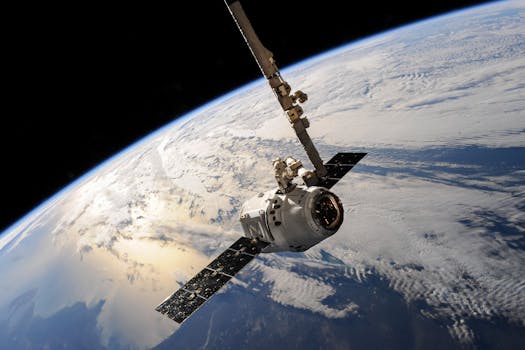The Future of Satellites: Revolutionizing Global Connectivity
The future of satellites is poised to revolutionize global connectivity, enabling faster and more reliable communication services. With advancements in space technology, satellites are becoming increasingly important for a wide range of applications, from navigation and communication to weather forecasting and Earth observation.

The Future of Satellites: Revolutionizing Global Connectivity
The future of satellites is poised to revolutionize global connectivity, enabling faster and more reliable communication services. With advancements in space technology, satellites are becoming increasingly important for a wide range of applications, from navigation and communication to weather forecasting and Earth observation. As the demand for satellite-based services continues to grow, the industry is expected to witness significant investments and innovations in the coming years.
Advancements in Space Technology
Recent advancements in space technology have made it possible to launch smaller, more efficient, and cost-effective satellites into orbit. This has led to an increase in the number of satellite launches, with many companies and organizations launching their own constellations of satellites. For example, SpaceX’s Starlink project aims to launch thousands of satellites into low-Earth orbit to provide high-speed internet services to remote and underserved communities. Similarly, Amazon’s Kuiper Systems is planning to launch a constellation of 3,236 satellites to provide broadband internet services.
Applications of Satellites
Satellites have a wide range of applications, including navigation, communication, weather forecasting, and Earth observation. Navigation satellites, such as the Global Positioning System (GPS), provide location information and timing signals to GPS receivers on the ground. Communication satellites, such as geostationary satellites, enable voice and data communication services over long distances. Weather forecasting satellites, such as geostationary and polar-orbiting satellites, provide images and data on weather patterns and storms. Earth observation satellites, such as the Landsat and Sentinel series, provide high-resolution images of the Earth’s surface, enabling monitoring of climate change, deforestation, and natural disasters.
Challenges and Opportunities
Despite the many advantages of satellites, there are also several challenges and opportunities that need to be addressed. One of the major challenges is the risk of space debris, which can pose a significant threat to operational satellites and spacecraft. Another challenge is the need for sustainable and environmentally friendly launch systems, which can reduce the environmental impact of satellite launches. On the other hand, the increasing demand for satellite-based services presents a significant opportunity for companies and organizations to develop new technologies and business models. For example, satellite-based internet services can provide connectivity to remote and underserved communities, enabling access to education, healthcare, and economic opportunities.
Conclusion
In conclusion, the future of satellites is poised to revolutionize global connectivity, enabling faster and more reliable communication services. With advancements in space technology, satellites are becoming increasingly important for a wide range of applications, from navigation and communication to weather forecasting and Earth observation. As the demand for satellite-based services continues to grow, the industry is expected to witness significant investments and innovations in the coming years. However, it is also important to address the challenges and opportunities associated with satellites, including the risk of space debris and the need for sustainable launch systems.



